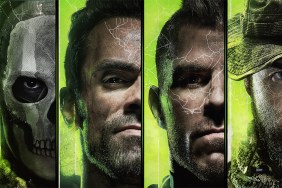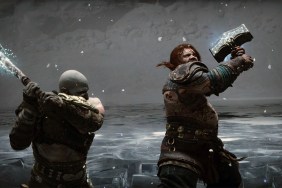Plagiarize…
Let no one else’s work evade your eyes,
Remember why the good Lord made your eyes,
So don’t shade your eyes,
But plagiarize, plagiarize, plagiarize…
Only be sure always to call it please "research".
[image1]And, in fact, that’s exactly what Project Director Tim Croucher claimed in his official statement while resigning from Majestic Studios in disgrace. Let’s be blunt here: Limbo of the Lost is a terrible, terrible (terrible) point-and-click adventure game, and is only notable because the developers stole models, backgrounds and cut-scenes from a number of other games and films. Victims of this… err… research include Elder Scrolls: Oblivion, Thief III, Painkiller, Diablo II, Unreal Tournament 2004, Enclave, Vampire the Masquerade: Bloodlines, Sea Dogs, World of Warcraft, Spawn, Pirates of the Caribbean (both Curse of the Black Pearl and At World’s End). Even the devil atop the pause menu is lifted from a poster for Beetlejuice.
Just check out this example from Oblivion, and here’s another from Thief III (and Diablo II). So fun, it’s almost a case of "Spot The Game". In fact, I’m so inspired that I’m going to research the hell out of this review. How much of the following is in my own words? We may never know. It’s like a brilliant shortcut political statement satirical prose-poetry art project.
A mammoth dud, a catastrophe, a huge floundering stinker of biblical proportions — that’s what all the advance stories on "Ishtar" Limbo of the Lost have prepared us for. In fact, it’s not nearly so grand an achievement. "Ishtar" Limbo of the Lost doesn’t attempt enough to be considered a magnificent failure. It’s something far less substantial.
During the intro, as well as by reading the manual, you learn the background of the story. Brothers Fate and Destiny are fighting again. Destiny believes that man should have a will of their own, while Fate supports that humans should be under his control. The seal to the Book of Sufferance has been broken, and with that book Fate can reign over mankind. Fate summons his four dark generals to aid him in his plans. Destiny brings in a mortal, Captain Benjamin Briggs, to challenge Fate. Captain Briggs is thrown in the Keep of Lost Souls, a place that serves as an in-between stop between the mortal world and the next, carrying nothing but the seal to the Book of Sufferance. His quest is to find the Book and use the seal to put an end to Fate’s dastardly plans. But Captain Briggs will not face his quest alone, he has an Earthly Guide to help him – you.
[image2]Unfortunately, to get all that, you need to read the manual and watch the accompanying DVD, because it’s not really explained in the game. Since you can’t skip dialogue, it’s especially noticeable that most of the game has exactly no plot. You’re just wandering from empty, dark, miserable location to empty, dark, miserable location, picking up random objects and chatting to oddly voiced Lost Souls about their problems, most of which are simply being in Limbo of the Lost. Sorry. Trapped in the Limbo of the Lost. Totally what I meant.
At least there’s tons and tons of dialogue that can’t be skipped. While some of the characters are decently voiced, including the strangely unflappable Captain Briggs, other performances (often by the same people affecting a strange accent or funny voice) are mumbled incoherently into the mic. If there’s a hallmark to the dialogue, it’s that nobody seems alarmed about being trapped in a nightmarish hell, even the main character who was just picked up and dropped there. It’s all very British, "Oh, my. There’s a hideous undead ghoul on the ceiling. I wonder how long it is until tea time?".
The interface in Limbo of the Lost is very simplistic. The relative simplicity of the game’s controls are actually a very rare redeeming factor, and I was overjoyed by the fact that I could easily exit the game whenever the ball of rage that built up in me started spiraling out of control. Left click will make Captain Briggs walk while right click will bring up the Ouija board. This board is a core element of the gameplay as it is used to control Captain Briggs. It divides up commands into four areas: Sense, action, take, and look. "Look" allows examination of the surroundings, "take" obviously means to take items, and "action" allows the Captain to use items.
[image3]But finding some of those items is another issue. Some of them are tiny and only noticeable if you move the pointer over their six tiny pixels. And now that you have the item, a worm, for example, what do you do with it? Almost all the puzzles are inventory puzzles, and in the case of the worm, you combine it with the flask of dirty water to create tequila. Bright red tequila. And we were supposed to figure that out how, exactly? By just randomly combining everything we own? It may lead eventually to Reese’s Peanut Butter Cups, but that is not, in fact, a puzzle.
I mean, when a game copy-pastes levels, sounds, graphics, UI, and designs from a crapload of other good games, such as Thief 3, UT2004, Morrowind, Oblivion, WoW, Vampire: Bloodlines (one of my all time favs), Crysis, and more, it must be super awesome, right? It’s like the combined awesomeness of all those games in one affordable title. It’s tempting to try to make a case for Gigli Limbo of the Lost, which has already been widely mocked, but I’m not that perverse: The game is bafflingly boring and ridiculous. The game has no structure at all, no sense of urgency, no compelling reason to exist or be endured whatsoever. The scenes play on and on and on, and the story wends down byways of no consequence whatsoever. Lost indeed.
-
Stolen material makes me giggle
-
But not enough to play this game










